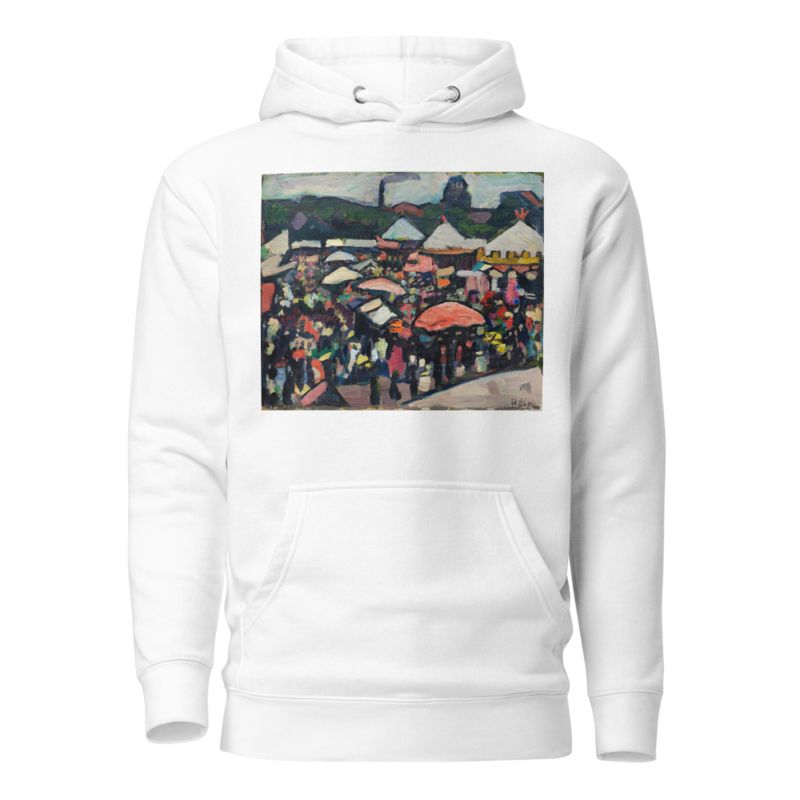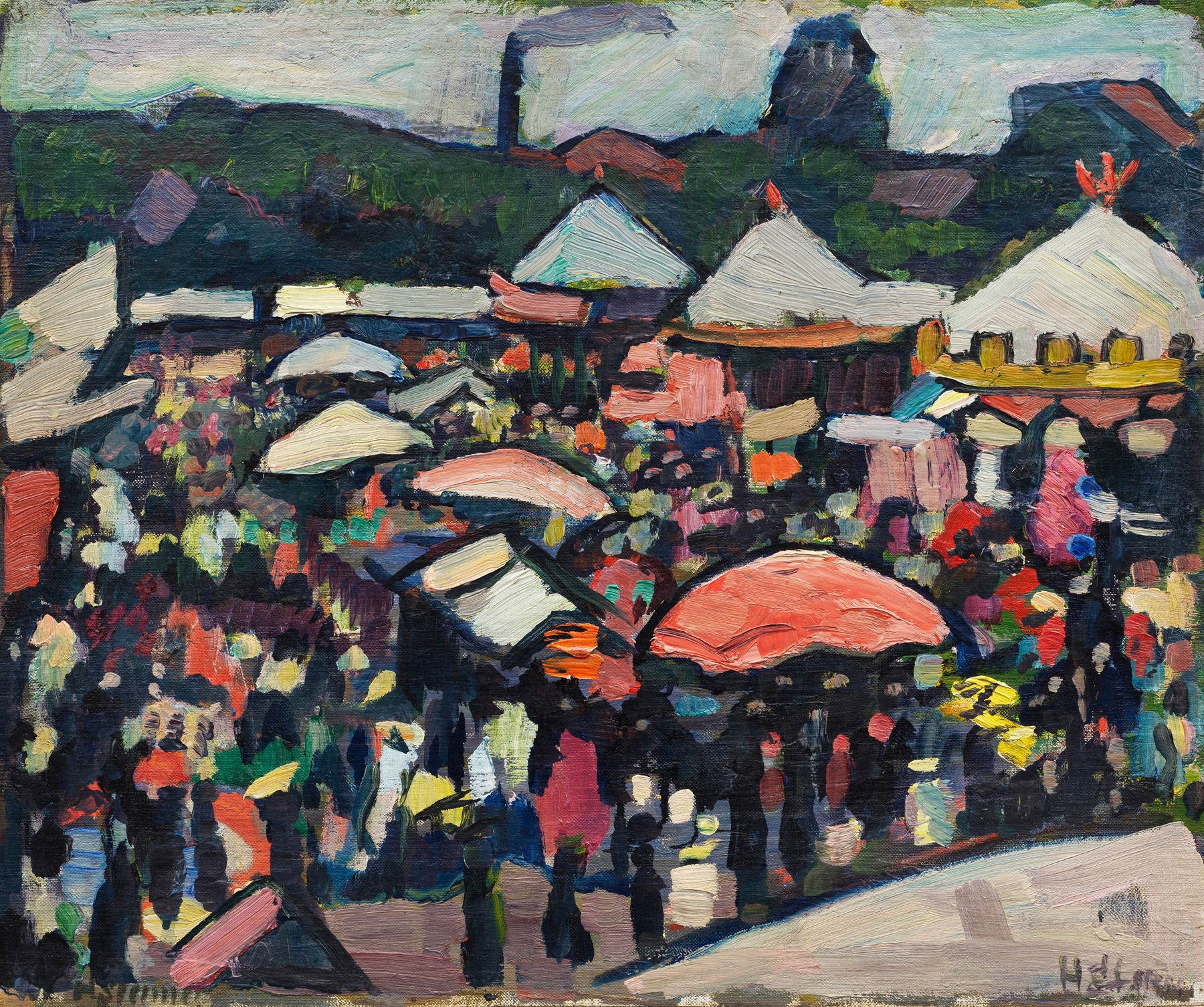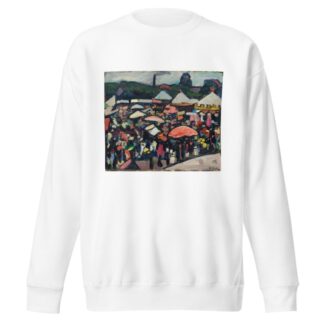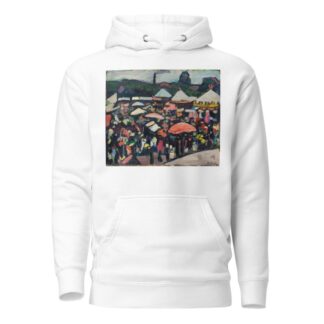Description
Jahrmarkt am Kesselbrink in Bielefeld by Hermann Stenner printed on a Hoodie
About the Hoodie
Modern fit
It provides a more tailored look than a regular fit
Comfortable
The fabric and fit of this item are extra comfy
Tear-away tag
Easily removable tear-away tag that allows you to add a custom inside label
Premium quality
The product is made from premium, high-quality materials
Classic unisex hoodie with a front pouch pocket and matching flat drawstrings. The 100% cotton exterior makes this hoodie soft to the touch.
- 65% ring-spun cotton, 35% polyester
- Charcoal Heather is 60% ring-spun cotton, 40% polyester
- Carbon Grey is 55% ring-spun cotton, 45% polyester
- 100% cotton face
- Fabric weight: 8.5 oz./yd.² (288.2 g/m²)
- Front pouch pocket
- Self-fabric patch on the back
- Matching flat drawstrings
- 3-panel hood
- Tear-away tag
Hermann Stenner (1891-1914)
Hermann Stenner was a German Expressionist painter and graphic artist.
His father, Hugo, was a decorative painter. He attended the local Arts and Crafts school and honed his skills by making copies of old paintings. In 1909, he passed the entrance examination at the Academy of Fine Arts, Munich, and was assigned to the drawing class of Heinrich Knirr. That summer, he spent some time with Hans von Hayek at his art school in Dachau. Both Von Hayek and Knirr recommended that he leave Munich to study with Christian Landenberger in Stuttgart.
In 1910, he enrolled at the State Academy of Fine Arts. After a year of study with Landenberger, he took composition classes from Adolf Hölzel, whose teaching methods differed from anything he had experienced before; treating art as a type of science. In 1912, he became one of Hölzel’s master pupils at his studio in the garden of Stuttgart Castle. Later that year, he spent four weeks with his friends in Paris.
In 1913, he was invited to exhibit at the first Expressionist art exhibition in Dresden. That same year, Hölzel was able to secure him a position painting murals in the main lobby of the upcoming Werkbund Exhibition, where he worked with Oskar Schlemmer and Willi Baumeister. The response to their work ranged from enthusiastic praise to categorical rejection.
Following the outbreak of World War I, Stenner and Schlemmer volunteered and were assigned to Grenadier Regiment #119 (“Königin Olga”). After serving for two months on the Western Front, the regiment was transferred to the Eastern Front in Poland, where he was killed during an attack on Iłów in Sochaczew County in the Masovian Voivodeship .
Despite his short working life, he was able to create 280 paintings and over 1,500 drawings. In March, 2016, on the 125th anniversary of his birth, the Villa Weber in Bielefeld officially became the Hermann-Stenner-Haus museum. The core of the collection was provided by Hermann-Josef Bunte, a legal scholar and art collector.






Reviews
There are no reviews yet.